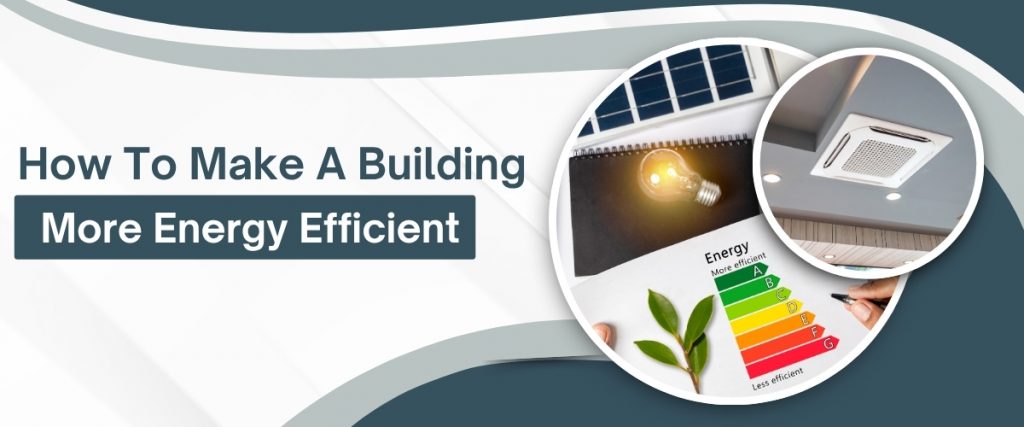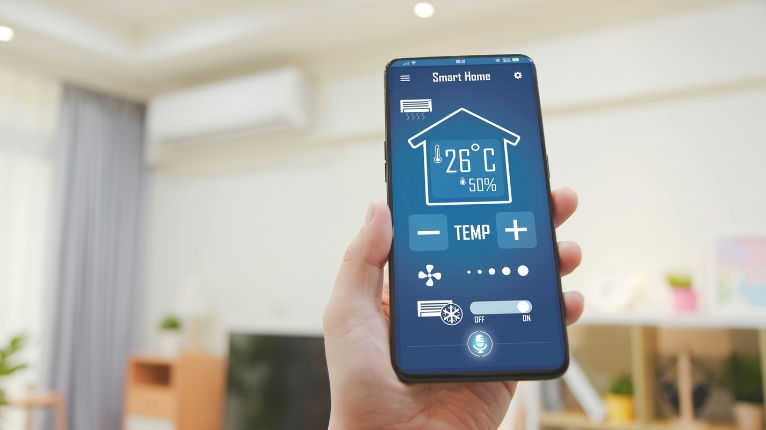Latest Blog
How To Make A Building More Energy Efficient

As energy prices continue to rise and carbon reduction becomes ever more urgent, creating an energy-efficient building is no longer optional; it’s a necessity. It does not matter if for a home, office, or industrial space, improving energy performance can deliver long-term savings, enhance comfort, and reduce environmental impact.
In this blog, we explore practical, proven strategies, both passive and active, that any building owner (or prospective owner) in the UK can adopt to cut waste, reduce heating costs, and move toward net zero performance.
1. Start with an energy audit/baseline assessment
Before making changes, it’s crucial to know where your building’s energy is going:
- Carry out a detailed energy audit (often using an accredited assessor). This will highlight heat losses, inefficient equipment, and opportunities for improvement.
- Use thermographic imaging / infrared surveys to identify thermal bridges and insulation gaps.
- Check the building’s current Energy Performance Certificate (EPC) / Display Energy Certificate (for public buildings) to see its rating.
- Monitor usage data (electricity, gas, HVAC loads) to understand peak loads and usage patterns.
This baseline helps you prioritise interventions with the highest return on investment.
2. Improve the building envelope (insulation & airtightness)
The building envelope (walls, roof, floor, windows) is the first line of defence against heat loss. Solid improvements here yield the biggest impact.
2.1 Wall, Roof, and Floor Insulation
- Roof/loft insulation: ensure good thickness (e.g., 270 mm+ in many UK upgrades) and full coverage to eliminate cold spots.
- Wall insulation: depending on the construction, use cavity wall insulation (if applicable) or internal / external wall insulation.
- Solid floors (where possible): insulating from below or using insulated screeds helps reduce heat lost to the ground.
Note: in older or historic buildings, special care must be taken to avoid moisture issues, the “whole building approach” is key.
2.2 Windows, Doors, and Glazing
- Replace single-glazed windows with double or triple glazing with low-E coatings.
- Use well-sealed frames, thermally broken frames, and ensure proper seals (weather stripping).
- Consider secondary glazing for heritage or listed properties where external modifications are restricted.
2.3 Airtightness and Draught Proofing
- Seal gaps around doors, windows, and penetrations (cables, pipes) to reduce uncontrolled airflow.
- Use controlled ventilation (see Section 4) instead of relying on leaks for fresh air.
- A more airtight building allows HVAC/ventilation systems to be more efficient (less loss or infiltration).
3. Upgrade heating, cooling & ventilation systems

Once your envelope is improved, the next step is making your mechanical systems more efficient.
3.1 Efficient Heating Systems / Heat Pumps
- Replace older gas boilers with air-source or ground-source heat pumps where feasible.
- Use condensing boilers or hybrid systems if full heat pump conversion isn’t viable immediately.
- Ensure proper sizing and integration with the building’s thermal capacity (oversizing leads to inefficiency).
3.2 Smart Controls, Thermostats & Zoning
- Use programmable and smart thermostats, time schedules, occupancy sensors, and weather compensation.
- Divide the building into zones (e.g., per floor, per wing) so you only heat what you need.
- Use demand-controlled ventilation and demand-based HVAC (adjust output based on occupancy/CO₂ levels).
3.3 Heat Recovery Ventilation Systems
- Installing a single-room heat recovery ventilation system (or MVHR for larger buildings) can recapture heat from exhaust air and transfer it to incoming fresh air.
- This helps maintain indoor air quality while reducing the load on heating systems.
- Ermen Systems specialises in ventilation / HVAC solutions that integrate energy-saving technologies like heat recovery.
3.4 Destratification and Air Circulation
- Large open spaces (warehouses, halls) often suffer from stratification (hot air near the ceiling, cold near the floor).
- Destratification fans can mix air, recovering heat from the roof, and reducing heating demand.
- Ermen Systems’ product range includes destratification fans intended to improve HVAC performance.
3.5 HVAC Inspection and Optimisation
- In the UK, TM44 inspections are legally required for air conditioning systems >12 kW every 5 years.
- Use the TM44 report to identify inefficiencies, outdated systems, leaks, or suboptimal controls.
- Ensure regular servicing and cleaning of filters, coils, and ducts to maintain efficiency.
4. Integrate smart systems, controls & monitoring

To maintain efficiency over time, you need intelligence and feedback mechanisms.
4.1 Building Automation and Sensor Networks
- Install sensors for temperature, humidity, CO₂, occupancy, and daylight.
- Let a Building Management System (BMS) or control logic adjust temperatures, ventilation, and lighting dynamically.
4.2 Lighting & Daylight Harvesting
- Use LED lighting (which uses far less energy and lasts longer).
- Incorporate daylight sensors to dim or switch off artificial lighting when natural daylight is sufficient.
- Use light zoning, only light the areas in use.
4.3 Renewable Energy Integration & Onsite Generation
- Add solar PV panels or building-integrated photovoltaics (BIPV), roof-mounted where feasible.
- Where available, couple with battery systems or energy storage to shift loads and reduce grid reliance.
- Use renewable heat, e.g., solar thermal, heat pumps, or ground-source systems.
5. Behavior, maintenance, & operational best practices
Technology is crucial, but human behavior and maintenance practices often make or break performance.
- Educate occupants on energy-aware behavior: turning off lights/appliances, closing windows when heating, etc.
- Set appropriate comfort levels (e.g., 19–21 °C) rather than overheating spaces.
- Monitor energy use continuously (monthly or real-time dashboards) and benchmark against similar buildings.
- Perform preventive maintenance: clean filters, check insulation integrity, repair leaks in ducts or roofing.
- Use local incentives, government schemes, or rebates in the UK to support retrofits.
6. Prioritisation and phased retrofit strategy
Especially for existing buildings, retrofit in phases:
| Phase | Focus | Key Benefits | Considerations |
|---|---|---|---|
| Phase 1 | Envelope (insulation, glazing, airtightness) | Big heat loss cuts, lower heating demand | May involve structural/heritage constraints |
| Phase 2 | HVAC, ventilation & controls | Better system efficiency, heat recovery | May depend on retrofit cost or access |
| Phase 3 | Renewables & smart systems | Offsets grid energy, dynamic control | Space, capital, integration challenges |
| Phase 4 | Monitoring & behavior | Sustained gains, continuous improvement | Needs user buy-in and feedback |
Use your audit results to rank ROI and implement in descending order of financial and energy impact.
Conclusion
Upgrading a building to become more energy efficient is a multi-pronged endeavour. Improvements to insulation and airtightness reduce demand, while modern heating, ventilation and control systems reduce supply cost. Smart monitoring sustains gains, and occupant behaviour plays its share. In the UK context, regulatory tools such as TM44 inspections, building regulations, and incentive schemes support this transition. As Ermen Systems’ mission suggests, integrating energy-saving technologies in a holistic, intelligent way brings both environmental and economic reward.
Next Steps: How Ermen Systems Can Help
If you’re ready to decarbonise your building and see real savings, Ermen Systems offers consultation and turnkey solutions in ventilation, HVAC controls, air purification, and smart systems. Contact us to perform an energy audit and tailor a retrofit path for your property.
